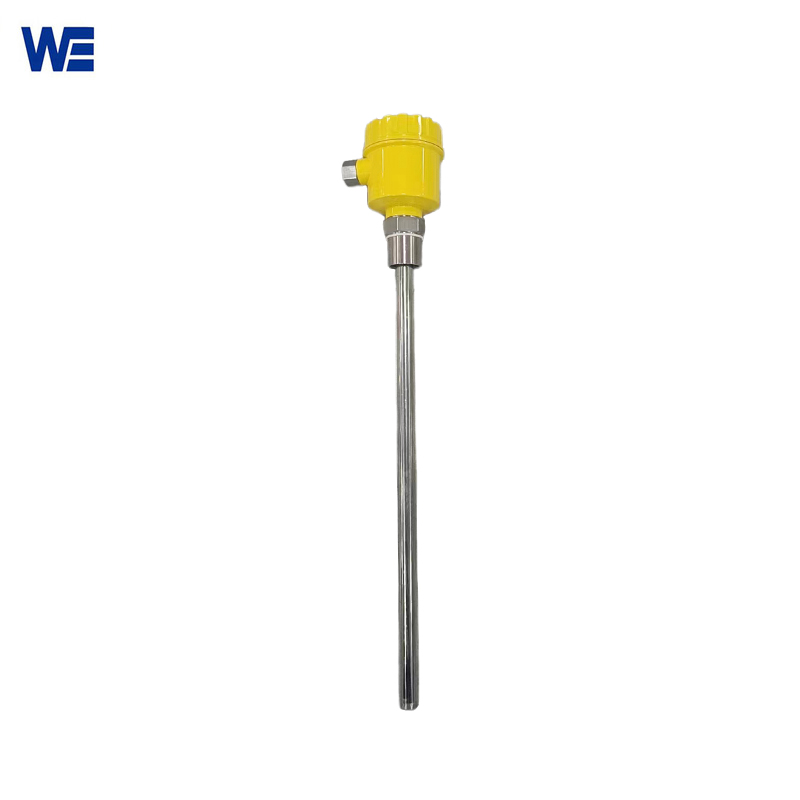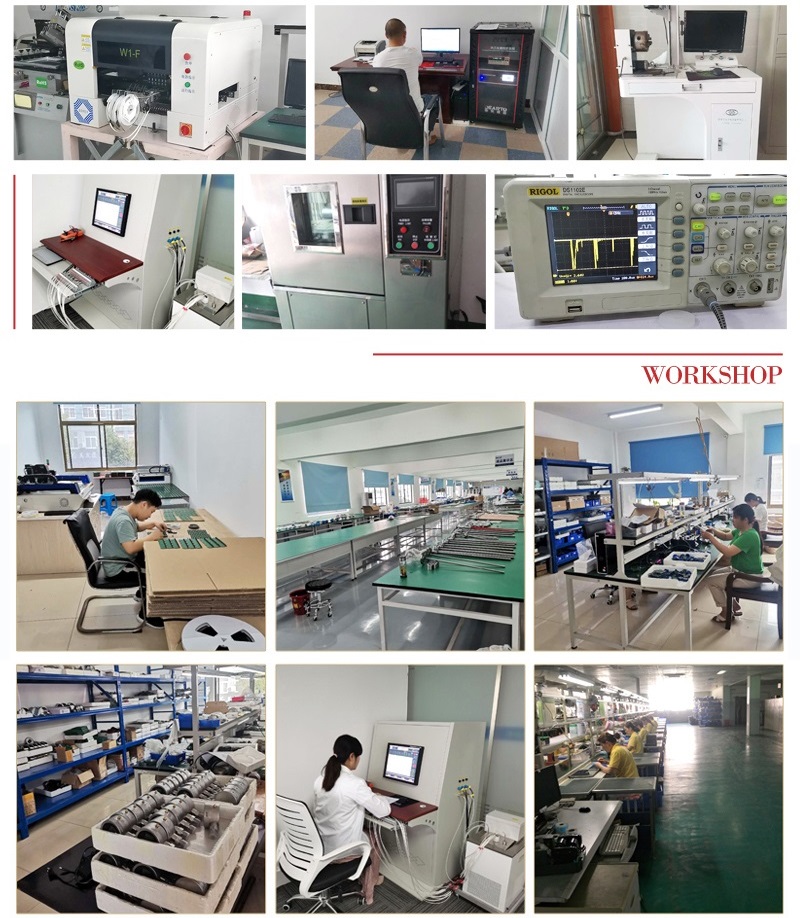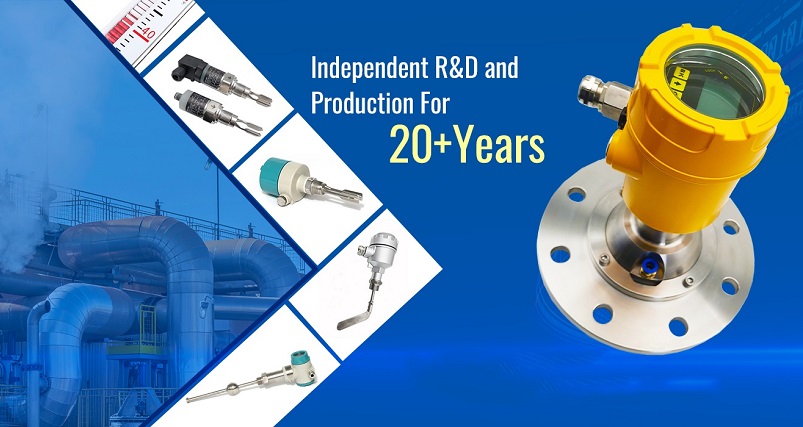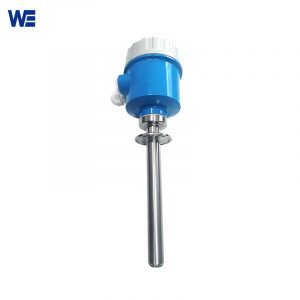- Have any questions?
- +86 15953537010
- admin@wepower-electronic.com
- Home
- Level Switch
- Rod Level Switch
- Vibrating Rod Solid Level Switch
Vibrating Rod Solid Level Switch
The piezoelectric crystal’s resonance drives the vibration of the solid level switch with a vibrating rod. The amplitude abruptly drops and the frequency and phase drastically alter when it is damped by the substance. The internal electronic circuit will detect these changes and, after processing, convert them into switch signal output.
![]()
What Are The Advantages Of Vibrating Rod Solid Level Switch?
Vibrating Rod Solid Level Switch is not afraid of material hanging, impact, or clamping. The vibrating rod solid level switch requires little maintenance. Light-emitting diodes indicate that the tuning fork and output are operational. It has three input modes (DC 24V, AC 110V, and AC 220V) and numerous output modes (DC current output type, relay contact output type, and DC voltage output type) that allow the status indication to be customized according on user habits. Every kind has an adjustable instrument switch sensitivity and a high or low fault alarm mode.
Application Scope Of Vibrating Rod Solid Level Switch:
- Material level detection for powder, granular materials, and bulk solids
- For sandblasting machines
- Coal powder, cement, fly ash
- Sand, gravel
- Plastic granules, grains
![]()
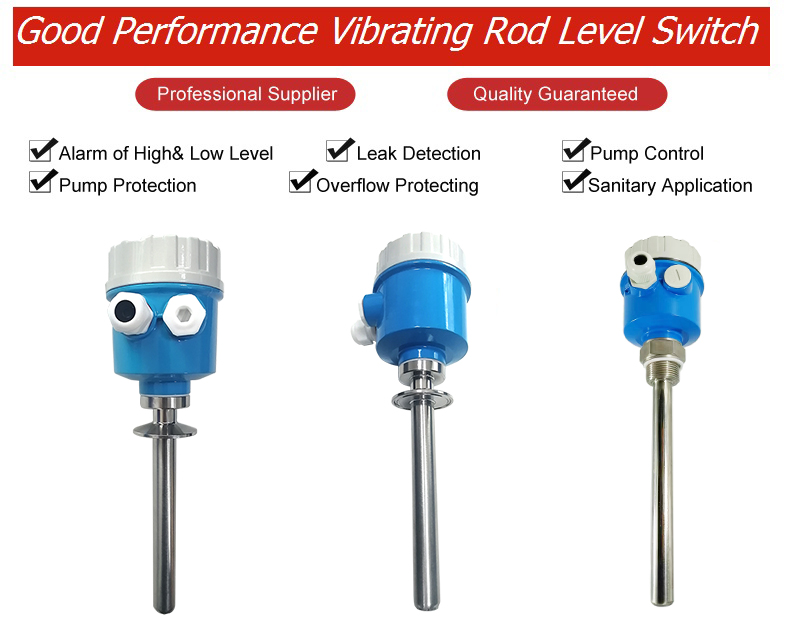
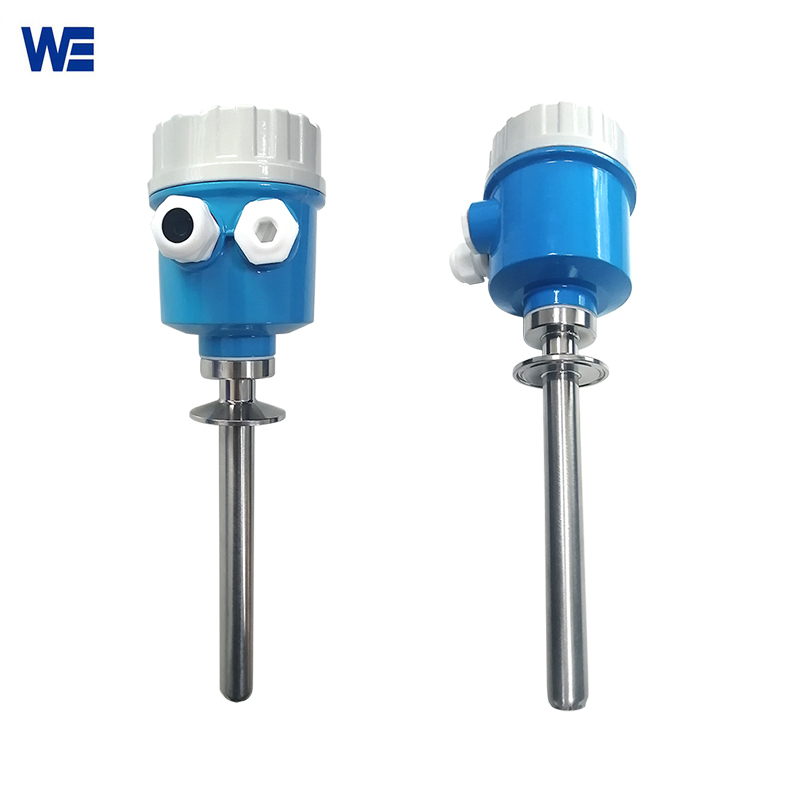
Wiring: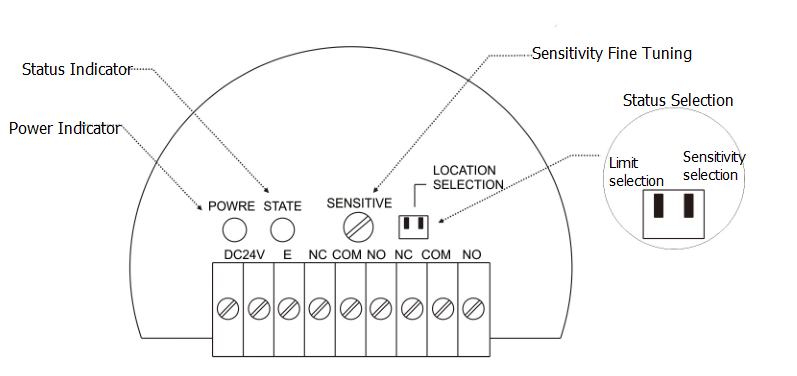
Parameters
| Product Name | Vibrating rod solid level switch |
| Medium Temperature Range | -20 ℃ ~ 200 ℃ |
| Ambient Temperature | -20 ℃ ~ 80 ℃ |
| Measured Medium | Powder & solid |
| Measured Medium Density | Solid ≥ 0.1g / cm3 |
| Measured Solid Particle Size | ≤ 10mm |
| Pressure Range | ≤ 1MPa |
| Housing Material | Die-cast aluminum |
| Fork Material | 1Cr18Ni9Ti |
| Protection Grade | IP65 |
| Process Connecting | 1 “NPT thread; Flange (user selected) |
| Power Supply | DC24V; AC220V 50HZ |
| Signal Output / Relay Output | 5A 220V AC / 3A 24V DC |
| Power Consumption | ≤ 2W |
| Tuning Fork Vibration Frequency | 300 ± 50Hz |
| Environmental Vibration Level | V.L.4 acceleration is not greater than 1g |
| Switch Signal Action Time | 1-60S |
Click The Picture To View More Level Switches



